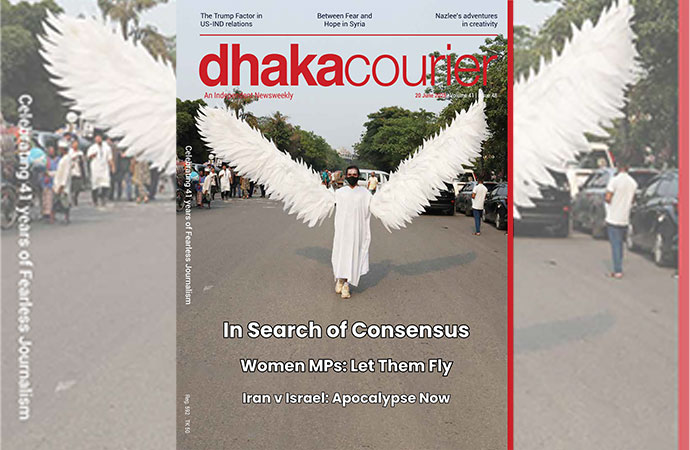Reportage












With much of the world having experienced the set of stay-at-home orders and work (and play!) restrictions imposed by the authorities in light of the COVID-19 pandemic roughly in sync, much of the economic pain that now bedevils our nations is shared. Remittances - money sent by migrants to their home countries - are projected to fall by a record 20% this year.
This decline, from a high of $714 billion in 2019 to an estimated $572 billion in 2020, comes as the world's largest remittance-sending nations have experienced especially stringent lockdowns, according to a Pew Research Center analysis of data from the World Bank, Oxford University and Google.
The 10 countries that sent 61% of the world's remittances in 2018 (the most recent year for which bilateral remittance data is available) have spent an average of 10 more days under coronavirus-related lockdowns - and experienced greater declines in physical mobility near workplaces - than other countries, the Pew analysis shows. This may have an outsize effect on the countries that depend heavily on these nations for remittances.
The decline in remittances is projected to hit all regions of the world, as many of the 272 million international migrants lose their jobs and stop sending money home. Remittances to European and Central Asian countries the World Bank defines as low and middle income are projected to decline by 28%, while slightly smaller declines are expected for low- and middle-income nations in sub-Saharan Africa (23%), South Asia (22%), Latin America and the Caribbean (19%), and the Middle East and North Africa (20%), according to the World Bank. These projections are based on information about prevailing wages and the number of international migrants in each country.
It is not unusual for worldwide remittances from migrants to ebb and flow with economic circumstances in sending countries. In 2009, during the Great Recession, global remittances declined 5% as economies shrank. And in 2016, remittances fell 1%, driven by weak growth in many countries and declining oil prices. Remittances can also increase during hard times in migrants' home countries. For example, remittances to Yemen more than doubled between 2011 and 2019 amid a civil war in that country.
To determine the severity of a country's COVID-19 lockdown, Pew Research Center examined two measures of workforce activity in remittance-sending countries: the number of days each country has spent under stay-at-home orders or workplace closures in 2020, according to researchers at Oxford University; and the average decline in physical mobility near workplaces during the pandemic, according to data from Google that is based on the movement patterns of smartphones.
Together, these indicators paint a portrait of declining economic activity around the globe, and crucially in the world's 10 largest remittance-sending countries. These 10 countries experienced an average 33% decline in physical mobility around workplaces from Feb. 15 to May 21, compared with a 26% decline among the other 116 countries or territories for which data is available. The same top remittance senders experienced an average of 67 days under workplace closures or stay-at-home orders as of May 28, compared with an average of 57 days for the other 154 countries or territories for which data is available.
We matched Pew's list with Bangladesh Bank's list of the 10 leading remittance-sending nations for Bangladesh, and found 5 of them to be the same (USA, UAE, Saudi Arabia, UK and Italy). A further four of the global top 10 (France, Germany, Canada and Australia) are in the top 20 for Bangladesh. So if the theory holds that the extended lockdowns imposed in these countries will have a knock-on effect on worldwide remittances, we may expect a similarly adverse effect on remittances into Bangladesh as well.
Yet official data on inward remittances over the last two months in particular, have flown in the face of such expectations. Bangladesh Bank recorded the monthly inflow of remittance at an all-time high in the first month of the current fiscal, as the expatriates sent $1.96 billion in remittance in the first 23 days of July, which was $1.59 billion for the entire month of July 2019.
The previous highest of $1.82 billion was recorded just a month earlier (June 2020). Two consecutive months of record-breaking inflows of remittance in the midst of a pandemic that threatens to choke the economy around this very point or valve, demands an explanation, surely. But so far we haven't come across anything truly satisfactory.
Some economists, including Dr Ahsan Mansur of PRI, have ventured that rather than regular remittance flows, the inflated numbers may actually represent transfers towards final repatriation of savings, either before or in preparation for returning to Bangladesh. Either way, he doesn't expect it to last.
"The expatriates are sending money from their savings or loans, not earnings," Mansur said.
It's important to note that many factors can influence human mobility, and that not all changes are necessarily attributable to COVID-19. For instance, the Pew researchers report their analysis covers a period that included Ramadan, a month-long Islamic holiday during which many people's daily habits change drastically as work slows and many restaurants close due to fasting in Muslim countries.
Some countries stand out for receiving an unusually large share of their gross domestic product in remittances from countries that have experienced heavy declines in mobility. For instance, 17% of GDP in the Palestinian territories came from remittances in 2018, with most of that money arriving from countries that have experienced especially large declines in mobility near workplaces this year. Jordan, which implemented one of the world's strictest COVID-19 lockdowns in late March, sent about $1 billion in remittances to the Palestinian territories in 2018.
Other countries that could be hit hard are among the world's most dependent on remittances. For example, Haiti's $3.1 billion in annual remittance inflows accounted for 33% of its GDP in 2018, making it the world's third most remittance-dependent country that year, after Tonga and Kyrgyzstan. Of Haiti's 2018 total, one-third (equal to 11% of GDP) came from countries that experienced large declines in workplace mobility this spring.
In the Bangladeshi context, remittances tend to be important in shoring up the foreign exchange reserves but with the 2019-20 fiscal's record intake of $18.2 billion being just a tad over 5 percent of GDP, there is little scope in the end for it to be decisive.
The Devil in his element
According to the Bureau of Manpower, Employment and Training (BMET), each year, around 600,000 workers migrate from Bangladesh in search of better livelihood opportunities abroad. The current number of Bangladeshis working abroad is estimated at close to 10 million. As the COVID-19 pandemic lingers, queues of those waiting to join work overseas will only grow further. Also there is no guarantee that the migrants who were forced to return in the last three months, can go back to their respective countries or not.
According to BAIRA, the association of recruiting agencies, about 1.5-2 lakh migrant workers had completed the process for overseas jobs in the last three months and were waiting to leave the country. Besides, the longer the COVID-19 crisis lingers in the wealthier economies, the more restricted our job markets are likely to become in future. According to IOM COVID-19 Response (Issue Brief, 8 May, 2020) "with migrant workers highly concentrated in occupations and sectors expected to be particularly hard hit by the economic consequences of the COVID-19 Crisis, inevitably, remittances will also take a hit". The situation will be more vulnerable for those countries which are particularly dependent on remittances. Remittances represent over 10% of GDP for 30 countries in the world, and over 5% of GDP for an additional 27 countries (Bangladesh falls in this group).
In 2019, around $18 billion was remitted to Bangladesh by migrants.The UN's migration agency, the International Organisation for Migration, or IOM, along with partners are concerned that the World Bank's predicted 22 percent drop in remittances to South Asia, driven by the global economic slowdown, will have adverse consequences for migrants and remittance-dependent communities in Bangladesh.
IOM, in partnership with Bangladesh Rural Advancement Committee (BRAC), is focused on providing assistance to vulnerable migrants returning from EU countries and looking to secure additional funding to assist vulnerable migrants, particularly those returning from Gulf Cooperation Council (GCC) countries where there have been large-scale, sector-wide retrenchments following the decline in oil prices.
Knowing who Returned
About 60 percent of the male migrants' households are surviving mostly on loans during the Covid-19 pandemic period as they fail to receive remittances from their near and dear ones, according to a study by the Refugee and Migratory Movements Research Unit (RMMRU), one of the most dedicated institutes working on the issues
It showed that 61 percent of the migrant workers' families back home did not receive any remittances in the last three months.
Only 39 percent of the families received remittances, on average Tk 30,000 for a quarter. Before the pandemic, these families received on average Tk 47,000 per quarter of a year.
The study on 'Impact of 'Covid 19 on Left Behind Migrant Households', was conducted by nine member organisations of Bangladesh Civil Society for Migration (BCSM) under the leadership of Tasneem Siddiqui, founding chair of the RMMRU.
It covered 100 arbitrarily returned migrant workers and 100 migrant households in 21 districts of the country.
The findings showed that nearly 38 percent of the female migrant workers' households are depending on loans to meet their family expenses. About 38 percent of female migrant workers' families have income by other members while for male households, it is 21 percent.
Remittance is the only source of income for 57 percent families. Around 18 percent of households depended on remittances for three-fourths of their income. For 14 percent of households, remittances constitute half the family income, the study mentioned.
The findings showed that the monthly household expenditure of migrant workers on an average was Tk 17,000 before the novel coronavirus outbreak, currently it dropped to Tk 7,300, reflecting a 43 percent decline.
RMMRU chair Tasneem Siddiqui, who presented the key findings of the study, said the country received an increased volume of remittances over the last few months. But increase in remittance flow may not reflect that migrants are being able to cope with the coronavirus-induced situation.
Many households fail to receive remittances due to different factors. Therefore, there is a need to extend support in cash to the distressed left behind families. Referring to the recommendation she stressed the need for effectively incorporating distressed migrant families in public assistance schemes under Covid 19.
She also suggested measures to protect women from violence and ensure exemplary punishment to the perpetrators. Ms Siddiqui said past experience has shown that violence against women increases during any crisis situation. RMMRU has collected 100 cases of violence in migrant households that shows women have faced rape, murder and exploitation.
Minister for Expatriates' Welfare and Overseas Employment Imran Ahmad said they will consider the recommendations of the research. He also said the economic condition of Middle East (ME) countries showed a downturn during the last three months which impacted the migrant workers.
The ME countries now are prioritising employing locals instead of migrants. So, the source countries are facing the pressure, he stated.
"So, it is needed to look for a way to control the situation. Diplomatic initiative is important, to this effect," he added.
With hands empty
A separate RMMRU study conducted earlier in the course of the Pandemic found nearly three quarters, 74 percent of returnee migrant workers failed to bring back any money from the country they were working in. It also found that the workers who had spent time in the deportation camps in those countries faced different forms of rights violations.
About 74 percent of returned workers had left behind a significant amount of remittances in job destination countries. On average, the affected migrants lost Tk 175,000 (minimum Tk 9500 and maximum Tk 500,000), the study showed.
A substantial majority of the money left behind was in the form of unpaid wages. The other returnees said they do not have dues of any outstanding payments.
In addition, cases were reported in which migrant workers lost money by giving loans to friends from other countries, paid for visa renewal and theft by law enforcers.
RMMRU conducted the qualitative study on 50 male migrant workers who came back from Saudi Arabia, United Arab Emirates (UAE), Qatar and Malaysia in the last three months.
Maximum workers were engaged in the informal sector. The research said 78 percent of the workers were picked up from public places, detained and forcibly returned while 10 percent returned voluntarily (mostly from Malaysia).
Some 6 percent returned on leave and another 6 percent came back being sponsored by employers for security reasons (also mostly from Malaysia).
On average the interviewees were detained or jailed for 20 days. Of them, only a few were treated well in detention.
Tasneem Siddiqui presented the findings of the study at a webinar while its Executive Director Prof CR Abrar moderated the programme. The RMMRU chair said migrants bore the brunt of coronavirus disproportionately. The infection and death rates of migrant workers are also generally higher than that of locals. RMMRU is also very firm in its position that the record amounts fetched this month, the last fiscal came down to the government's incentivised approach that made them feel valued.

























Leave a Comment
Recent Posts
The Northeastern Question
When secessionist movements sprang up across the Eastern European part ...
Trump’s Tariff: How far should ...
Will Bangladesh manage to get a last minute reprieve on its 'Trump tar ...
Rivers, Peaks, and Expressions – My Experience at th ..
What lies behind the alarming spike in violence agai ..
A Himalayan choice
Twenty Palestinians were killed at a food distributi ..